What would real democracy look like?
- August 2, 2013
Anarchism & Autonomy
As representative democracy sinks into crisis, we need to go back to democracy in its original meaning as rule of the people. What could this look like?
- Author
Today, democracy is equated with representative government based on free elections of political elites that rule on the citizens’ behalf. This system, referred to as “representative democracy”, has been the dominant one in the West for the last two hundred years and is now being exported across the world and promoted as the only possible alternative to outright dictatorship.
But this system is now in a deep crisis. In established representative democracies, the trust in political elites and conventional institutions is crumbling. Participation in elections is shrinking, and political parties are losing their members. In the old “well-developed democracies” of Europe, the streets are boiling as millions protest against unpopular and brutal austerity policies imposed on them from above. More and more people are now realizing that their elected representatives do not represent them. Rather, governments of both left and right bow to the dictates of the big banks, the financial institutions and the multinational corporations and their powerful lobbies. In this situation, the ballot has little meaning because we have no real choice. We can only change political elites that rule us, but we do not have the right to decide upon the development of the society in which we live.
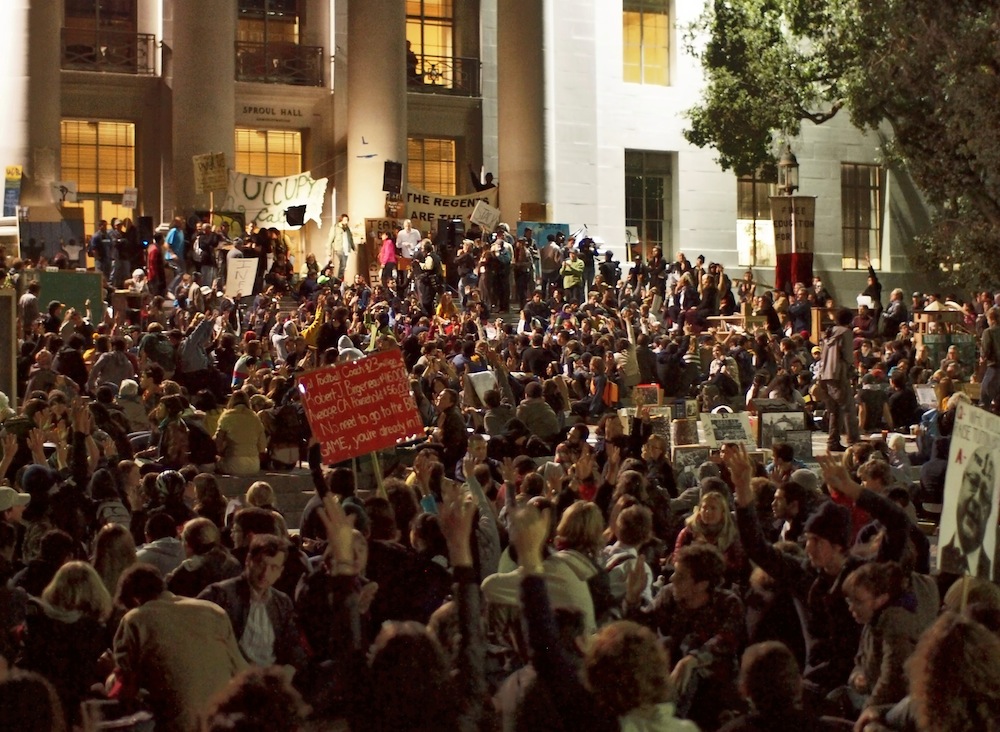 A real democracy, however, is a direct and participatory democracy, in which all citizens have the possibility and the right to participate in the decisions that affect our lives and our communities. While the powers that be and mainstream media and pundits argue that such a citizen-based democracy is not possible or even desirable, there exist in fact a range of new institutions and experiments — as well as some old ones — that show that a direct and participatory democracy is both possible and feasible today. These democratic innovations, however scattered and limited, could — if improved, strengthened and spread — become the tools for a radical democratization of society. In this article I will take a look at some of these democratic institutions and mechanisms, discuss their strengths and weaknesses, and explore their potentials.
A real democracy, however, is a direct and participatory democracy, in which all citizens have the possibility and the right to participate in the decisions that affect our lives and our communities. While the powers that be and mainstream media and pundits argue that such a citizen-based democracy is not possible or even desirable, there exist in fact a range of new institutions and experiments — as well as some old ones — that show that a direct and participatory democracy is both possible and feasible today. These democratic innovations, however scattered and limited, could — if improved, strengthened and spread — become the tools for a radical democratization of society. In this article I will take a look at some of these democratic institutions and mechanisms, discuss their strengths and weaknesses, and explore their potentials.
Participatory budgeting
The popular assembly where citizens meet face to face to discuss, vote and make collective decisions is the original form of democracy. Historically different kinds of popular assemblies have existed in many communities across the world, from village assemblies in North Africa to the Assembly of ancient Athens, the Landsgemeinde of the medieval Swiss cantons, and the town meetings of 17th century New England.[i] In recent decades, a myriad of new democratic institutions have been created across the world, in which popular assemblies form an essential part of the institutional structure. The most famous of these is participatory budgeting.
Participatory budgeting lets residents decide how to spend their city’s or municipality’s public budget through a process of popular assemblies in the neighborhoods and the districts. It was first developed in the city of Porto Alegre in Southern Brazil in the late 1980s when the Brazilian Labour Party, PT, won the municipal elections after the end of the military dictatorship. Since then, it has spread to hundreds of cities and municipalities in Latin America, Europe and the United States.
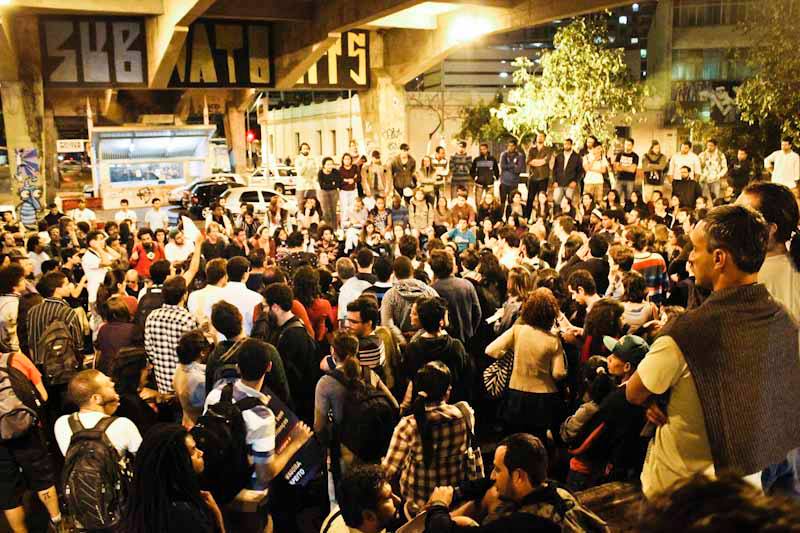
In the neighborhood assemblies all residents have the right to participate and to vote on the budget priorities of their neighborhood. These assemblies then elect delegates to regional assemblies and to a budget council, which puts together a budget for the whole city, based on the priorities made in the neighborhood assemblies. Large numbers participate in the process; in some places over 100.000 participate each year. Usually the majority of the participants are women, the poor, and other sections of the population that are marginalized in conventional political institutions. Participatory budgeting has lead to many positive results, including poverty reduction and redistribution of budget resources to the poorest neighborhoods, a large reduction in corruption, and to more transparency as well as a more vibrant civil society.
However, there are large variations in the institutional design of the different models of participatory budgeting that have spread across the world. The strong models give the residents decision-making power over the entire or large parts of the municipal budget and are based on neighbour assemblies where all residents can participate and vote on priorities. It is these strong models that have produced the best results in the form of poverty reduction, decline in corruption and large participation from the residents.[ii]
In the original model of participatory budgeting that was created in Porto Alegre, Brazil, several rules were built into the process that encouraged participation and ensured transparency and accountability. The more residents that participated in a certain neighborhood assembly, the more delegates that neighborhood got in the regional forums that could argue for their neighborhood’s priorities. This mechanism mobilized many, especially from the poor and marginalized neighborhoods to participate.[iii]
Additionally, the municipal administration hired community organizers who informed the residents about the process and encouraged people to participate. To prevent the establishment of a professionalized political class, all delegates were recallable and their terms were limited and short (1-2 years). The mayor and the municipal administration participated in the meetings, so that the residents could hold them to account. And to ensure transparency, all meetings were open to the public and all information was made accessible.
A major dilemma of participatory budgeting is the question of legislative power. In Venezuela[iv] and Peru[v], participatory budgeting is mandatory for all the countries’ municipalities by national law. Most cases of participatory budgeting around the world though, have no direct legislative power. In Porto Alegre, participatory budgeting was not codified into the municipal law. The reason for this was to keep it flexible and this made it possible to gradually expand the process to give citizen power over larger parts of the budget. On the other hand, when participatory budgeting is not codified into law, the municipal administration can abolish or restructure the process at any time.[vi] Thus, the process gets vulnerable to governments and politicians wanting to undermine it by reducing citizens’ decision-making power and participation.
Participatory budgeting, as it was first conceived of in Porto Alegre, is also facing other challenges. As Carole Pateman documents in her essay Participatory Democracy Revisited, many of the institutional models that are being promoted as participatory budgeting bear very little resemblance to the original Porto Alegre model.[vii] These are models where citizens either have decision-making power over only a tiny fraction of the budget or some small additional funds, or where citizens only have an advisory role and no decision-making power. As weak models have been promoted by international agencies like the World Bank, the term participatory budgeting has been emptied of content. It is now being used to cover any kind of participation, including consultation, information sharing or giving feedback to government. Also in Porto Alegre itself, the process has become diluted the last decade.
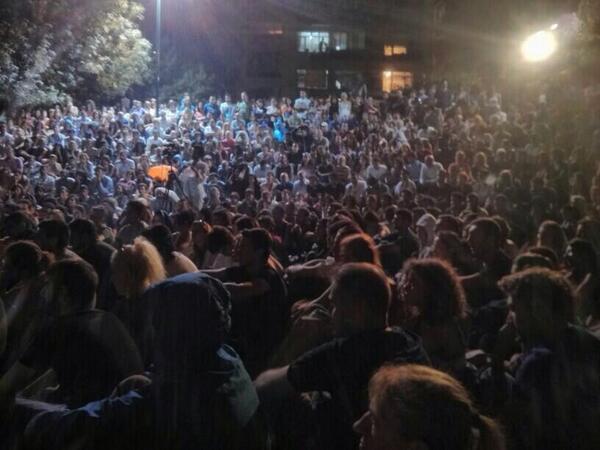
If participatory budgeting is to be a tool for a genuine democratization of society, the citizens must be given decision-making power over the entire or at least a large part of the municipal budget, and the process must be a bottom-up process where the sovereign power lies with the citizens in the assemblies. Local authorities must be willing to give away power to the residents in the assemblies, and there is a need for decentralization of power from national and international levels to the municipal and local levels. The latter happened in Brazil, as the country’s constitution of 1988 moved considerable power to the municipalities, including economic power.[viii]
Communal Councils
Another participatory institution based on popular assemblies are the consejos comunales, the communal councils in Venezuela. Communal councils are small participatory institutions, composed of approximately 200-400 families in urban areas and 20-50 families in rural areas, which make decisions about the initiation and implementation of local projects. Projects include basic services like water and sewage systems, electricity, medical centers, housing and road building, as well as cultural activities. All decisions are made through popular assemblies composed of at least 10 percent of residents over 15 years. The assemblies also elect committees tasked with financial management, monitoring government, and local priorities like health, education and land management.[ix]
In a few years, the communal councils have become very popular, and there are now over 30.000 of them across Venezuela. The government has transferred billions of dollars to the councils, and thousands of projects have been implemented. Also, larger ‘communes’ have been created, consisting of many communal councils.
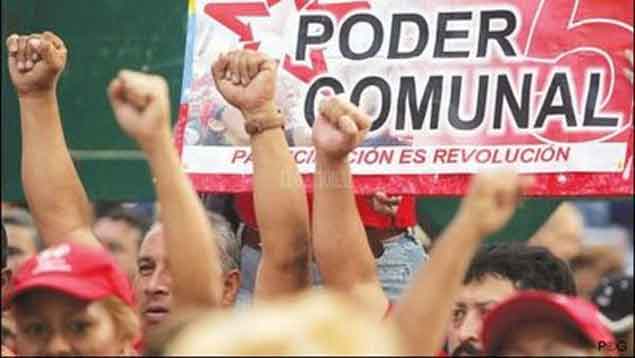
As with participatory budgeting in Brazil, decentralization was a crucial step in moving power downwards to ordinary citizens at the grassroots level. Although The Communal Councils Law was passed in 2006, a decentralization process started already in the 1980s, paved the way. Through this process, considerable power was moved from national and regional levels to municipal governments. In 2006, the decentralization was continued and deepened by the Chavez government, by moving power further down, from local governments to the citizens in the neighbourhoods.[x]
However, the communal councils still have to apply to the Presidential Commission of Popular Power for funding. This gives the central government in Caracas the final power to decide which projects will be funded. National agencies also determine the rules which guide the communal councils and these rules limit the power of the councils. The communal councils have met opposition both from local and national bureaucracy, and the national government has been criticized for trying to centralize and dominate the process.
None of these weaknesses are unfixable; the communal councils have potential to be strengthened and further democratized. Council participants and social movements are actively struggling to take power back from the central government to the communities and are demanding more power over funding, rules and other parts of the process. Innovative proposals to decentralize and radicalize the communal council system have also appeared, including a proposal to integrate different levels of government through popular federalism: “a state where regional autonomy is strong and the central state weak, but coordinating.” This proposal is a model of participatory democracy that would compose a multi-level system of participation.
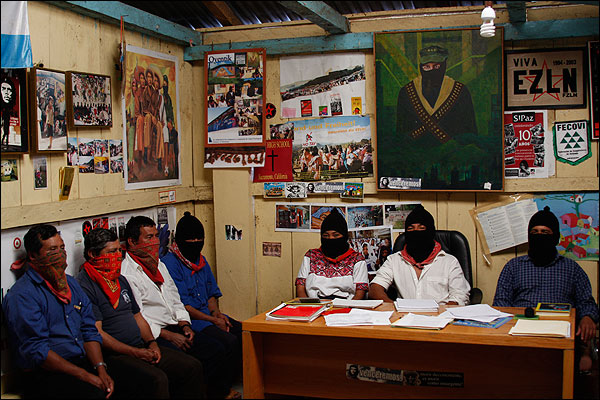
Participatory budgeting and communal councils are two of the most well known cases of participatory institutions in which popular assemblies play a key role. There exist, however, a large number of other institutions, ranging from the Zapatistas’ Councils of Good Government and the Kurdish general assemblies and councils, to the neighbourhood assemblies and committees making decisions on cultural policies and urban planning in Grottamare, Italy; participatory municipal administration in Camaragibe, Brazil; and worker-owned cooperatives in Argentina and elsewhere. By studying these institutions, we can identify their strengths and limitations; how they can be improved and spread; and in which ways they can contribute to a radical democratization of society.
Sortition and mini-publics
Certain democratic mechanisms are essential to participatory institutions, as they prevent the establishment of a cemented and professionalized political class insulated from ordinary citizens and local communities. Such mechanisms include short and limited terms for elected delegates, and delegates being recallable at any time. Rotation of delegates is another way to prevent creation of elites and to ensure diversity and mass participation. In the Zapatistas’ Councils of Good Government, for example, each citizen serves on the Council for only two weeks, before they go back to their communities.
Another mechanism that effectively prevents the establishment of elites and ensures the participation of ordinary citizens in decision-making and as holders of political offices, is sortition, or selection by lot. The use of lot played an important role in the democracy of ancient Athens, where most positions of political authority were selected this way. For Aristotle, selection by lot was central to democracy, while elections were the mark of oligarchy. In the Athenian democracy, lot ensured that citizens could “rule and be ruled in turn”, and together with rotation of office, it functioned as a defense against oligarchy. In modern representative systems, however, selection by lot is absent. “Democracy” is now exclusively equated with competitive elections for positions of political authority.[xi]
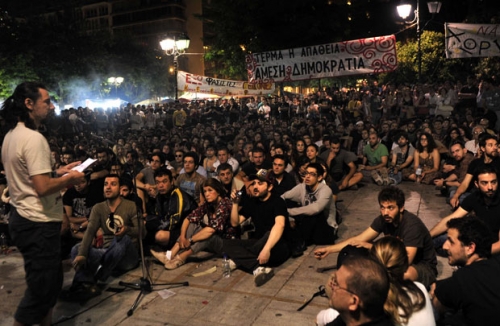 However, the last decades have seen a range of experiments with sortition in deliberative institutions like citizens’ assemblies, citizen juries, consensus conferences, planning cells and deliberative polls, often referred to as mini-publics. Sortition was also recently used in the first part of the process to write a new constitution in Iceland.
However, the last decades have seen a range of experiments with sortition in deliberative institutions like citizens’ assemblies, citizen juries, consensus conferences, planning cells and deliberative polls, often referred to as mini-publics. Sortition was also recently used in the first part of the process to write a new constitution in Iceland.
In mini-publics, deliberation is usually guided by independent facilitators; the participants hold hearings in which they hear evidence from and question expert witnesses; and deliberations usually take place both in plenary and in small groups. Participants are selected for mini-publics through the use of statistical sampling to ensure that citizens from all social groups are represented. Sortition differs from popular assemblies in that equal opportunity to participate is replaced by equal probability to being selected to participate. This way, no citizens or social groups are systemically excluded from participation.[xii]
With a few exceptions, like the British Columbia Citizens Assembly, most mini-publics are only advisory. The participating citizens are consulted, but they don’t have any decision-making power. Another weakness of most mini-publics is the role of organizers (usually governments), who set the agenda and choose experts and thus are able to influence the outcome of the deliberations. In this way mini-publics can be manipulated by existing political institutions and elites to legitimise decisions made elsewhere. And, as Pateman points out, most mini-publics are only temporary and are usually advocated as a mere supplement to the existing electoral system.[xiii]
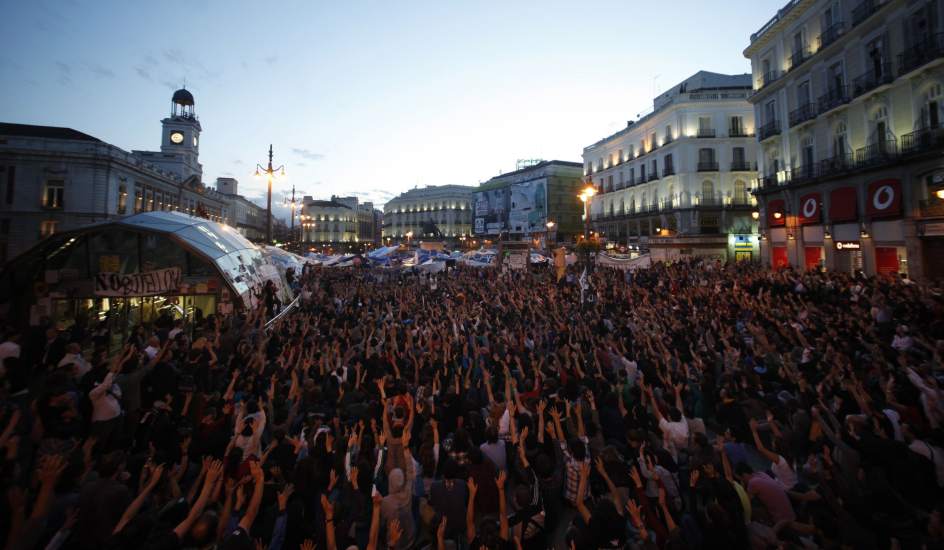
Experiments with mini-publics and recent use of sortition, however, have given us rich proof that ordinary citizens are able discuss and solve complex problems when given the possibility to do so, and that they are able to take important decisions in the public interest. Several democratic theorists have recently made proposals for different kinds of political bodies, including legislative bodies, based on sortition that would not just be complements to the existing electoral institutions, but constitute alternatives.
Citizen Initiatives
Citizen initiatives are democratic mechanisms that let citizens propose and vote on laws and policies. By gathering a certain amount of signatures, citizens can demand a binding vote on a proposed policy or legislation. Citizen initiatives differ from referendums in which citizens only can accept or reject a law or policy proposed by parliament. Switzerland was the first country to introduce citizen initiatives as well as referendums, and several countries, especially in Europe and Latin America have since introduced them at national, state or local levels.
The promise of citizen initiatives is the way in which they can give citizens power to initiate and to directly decide upon large-scale issues. But like the other democratic institutions and mechanisms discussed above, citizen initiatives also have their limitations. A common problem is that the large numbers of signatures required and the short time frame ensure that only those who can afford to use expensive professional signature-gathering firms can submit an initiative.
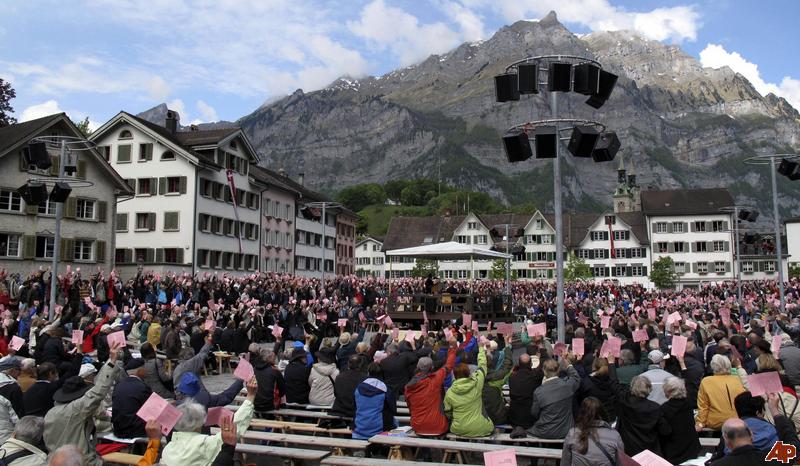
Another problem is that citizen initiatives are often subverted by the manipulations of wealthy and powerful interests and political elites. Big business frequently pours huge sums of money into misleading campaigns to influence the outcome of the vote (a recent example of this is the proposition 37 to label food containing GMOs in California that was defeated by agribusiness which spent 45 million dollars on misleading ad campaigns). It is also common that corporations and corporate lobbies launch counter-initiatives to defeat initiatives on social or environmental issues that they don’t like.
This does not mean that citizen initiatives cannot be valuable democratic tools, but there is a need for careful consideration of how these are designed, to prevent their subversion by the wealthy and the powerful. Improvements could include lower number of signatures required and longer timelines, and eliminating campaign contributions. Also it is important to ensure that citizens get sufficient information about the issues to be voted upon and to ensure a broad and inclusive public deliberation.
Citizen initiatives are effective instruments for decision, but not for deliberation. While direct democracy also should include other tools and arenas for decision making than popular assemblies, a system based mainly on voting would be atomistic and insufficient. In face-to-face assemblies and other forms of collective decision-making, citizens are exposed to and required to recognize and take into consideration the views of other citizens with different perspectives and backgrounds and are thus better able to make considered judgements.[xiv] But in spite of their limitations, citizen initiatives can constitute an important element in a broader framework of diverse direct democratic and participatory institutions.
A Grassroots Network for Participatory Democracy
A radical direct and participatory democracy will not be handed down to us by the elites, but has to be struggled for by ordinary citizens and social movements. As Occupy Oakland activists Gabriel Hetland and Abigail N. Martin emphasize, institutional reforms must be accompanied by popular struggle and direct action. This is exactly what happened in the municipality of Torres in Venezuela, where hundreds of citizens occupied City Hall to demand implementation of participatory budgeting. The result of this popular struggle was one of the world’s best participatory budgets, in which residents have control over 100 percent of the municipal investment budget.
For a radical democratic change to happen, there must be large popular movements demanding and struggling for this change. But unless ideas of direct and participatory democracy are known and familiar to most people, such movements will not emerge. So a first step, then, is to spread these ideas and make a strong argument for how direct and participatory democracy can be feasible today. As Kristinn Már Ársælsson from the ALDA association in Iceland points out, people will not call for what they don’t know.
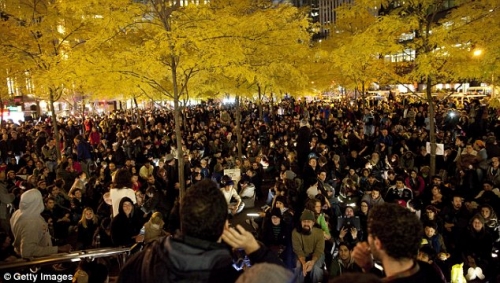
Perhaps the time has come to create an international network from the bottom-up of social movements and activists campaigning for and struggling for direct and participatory democracy. While there already exist some networks and initiatives, most of these are sponsored by or supported by agencies like the World Bank and by governments and other elite institutions. Few of these aim for participatory institutions as tools for radical democratization, but see these as mere additions to the existing political system. What is lacking is a more radical agenda, an international grassroots-based network promoting and struggling for participatory democracy as an alternative and ultimately a replacement of the existing system. Through such a network, social movements, activists and ordinary citizens across the world could exchange ideas and experiences, learn from each other, and develop common campaigns and struggles.
The huge task of reinventing and struggling for direct and participatory democracy in the age of austerity, centralized corporate power and technocratic rule will not be easy. But in the face of increasing ecological, social, political and economic crises, creating real democracy could be our only hope.
[i] Some of these assemblies and town meetings still exist today, but their power has been dramatically reduced as most decision making power has been moved away from local and municipal levels to national and international levels.
[ii] Pateman, Carole. (2012), “Participatory Democracy Revisited”, Perspectives on Politics 10, p. 12.
[iii] Smith, Graham. (2009) Democratic Innovations: Designing Institutions for Citizen Participation, New York: Cambridge University Press, p. 43.
[iv] Hetland, Gabriel. (2012) “Grassroots Democracy in Venezuela”, http://www.geo.coop/node/782.
[v] UN-HABITAT (2004), 72 Frequently Asked Question about Participatory Budgeting, Quite: AH Editorial. Can be downloaded from: http://www.unhabitat.org/documents/faqqPP.pdf.
[vi] Smith, op. cit., p. 49.
[vii] Pateman, op. cit., p. 14.
[viii] Smith, op. cit., p. 65.
[ix] Lerner, Josh. (2007), “Communal Councils in Venezuela: Can 200 Families Revolutionize Democracy?”: http://venezuelanalysis.com/analysis/2257.
[x] Ibid.
[xi] Manin, Bernard. (1997), The Principles of Representative Government, New York: Cambridge University Press, p. 3.
[xii] Smith, op. cit., p. 79.
[xiii] Pateman, op. cit., p. 9.
Source URL — https://roarmag.org/essays/real-direct-participatory-democracy/

